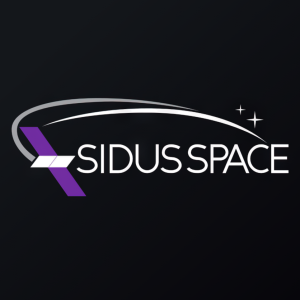Sidus Space Secures NOAA Approval to Provide Imaging Services to Government and Commercial Customers
Through this new license authority, Sidus LizzieSat™ satellites will collect and distribute images and data to government and commercial customers supporting a wide range of applications. The Sidus’ PAN and SWIR imagers will flow high-quality, diverse satellite data into our FeatherBox Artificial Intelligence onboard processor which integrates the images with time synced Automated Information Systems (AIS) and GPS data to provide near real-time customer status regarding marine traffic trends, illegal fishing activities, methane emission locations and quantities, and vegetative stress implications on crop production around the globe.
"NOAA's Tier 1 remote sensing license approval is a significant milestone for Sidus Space. With PAN and SWIR imaging capabilities, we're focused on our commitment to practical innovation in space technology while addressing real-world challenges," said Carol Craig, CEO and Founder of Sidus Space.
LizzieSat is expected to launch in March 2024 on SpaceX’s Transporter-10 mission from Vandenberg Space Force Base,
About Sidus Space
Sidus Space (NASDAQ: SIDU) is a Space and Data-as-a-Service satellite company focused on mission-critical hardware manufacturing; multi-disciplinary engineering services; satellite design, production, launch planning, mission operations; and in-orbit support. The Company is located in
Sidus Space has a mission of Bringing Space Down to Earth™ and a vision of enabling space flight heritage status for new technologies while delivering data and predictive analytics to domestic and global customers. Any corporation, industry, or vertical can start their journey off-planet with Sidus Space’s rapidly scalable, low-cost satellite services, space-based solutions, and testing alternatives. More than just a “Satellite-as-a-Service” provider, Sidus Space is a trusted Mission Partner–from concept to Low Earth Orbit and beyond. Sidus Space is ISO 9001:2015, AS9100 Rev. D certified, and ITAR registered.
Forward-Looking Statements
Statements in this press release about future expectations, plans and prospects, as well as any other statements regarding matters that are not historical facts, may constitute ‘forward-looking statements’ within the meaning of The Private Securities Litigation Reform Act of 1995. These statements include, but are not limited to, statements relating to the expected trading commencement and closing dates. The words ‘anticipate,’ ‘believe,’ ‘continue,’ ‘could,’ ‘estimate,’ ‘expect,’ ‘intend,’ ‘may,’ ‘plan,’ ‘potential,’ ‘predict,’ ‘project,’ ‘should,’ ‘target,’ ‘will,’ ‘would’ and similar expressions are intended to identify forward-looking statements, although not all forward-looking statements contain these identifying words. Actual results may differ materially from those indicated by such forward-looking statements as a result of various important factors, including: the uncertainties related to market conditions and other factors described more fully in the section entitled ‘Risk Factors’ in Sidus Space’s Annual Report on Form 10-K for the year ended December 31, 2022, and other periodic reports filed with the Securities and Exchange Commission. Any forward-looking statements contained in this press release speak only as of the date hereof, and Sidus Space, Inc. specifically disclaims any obligation to update any forward-looking statement, whether as a result of new information, future events or otherwise.
View source version on businesswire.com: https://www.businesswire.com/news/home/20240103148144/en/
Investor Relations
Valter Pinto
KCSA Strategic Communications
sidus@kcsa.com
(212) 896-1254
Media
Pam Davis
Sidus Space
mediateam@sidusspace.com
Source: Sidus Space








